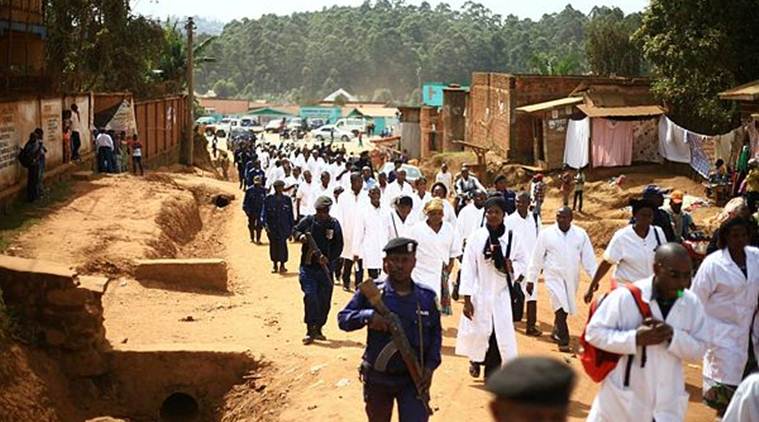
The death toll from Ebola Virus Disease (EVD) is racking up. Till May 7, more than 1,600 cases and nearly 1,069 deaths have taken place, making the outbreak in the eastern Democratic Republic of Congo (DRC) the second largest in history, as per the World Health Organisation (WHO). The virus is affecting more women (55 per cent) and children (28 per cent) aged less than 18 years. What is adding to the problem is the continuous state of violence in the country that makes it potentially unsafe for health workers. “The number of healthcare workers affected has risen to 97 (6% of total cases),” said WHO.
Since the outbreak of the virus in August 2018, more than 1,11,000 people have been vaccinated in the DRC. Despite the highly potent vaccine, the number of Ebola cases is steadily on the rise. This spurt in cases could be attributed in part due to incidents of fighting “affecting the ability of response teams to immediately identify and create vaccination rings around all people at risk of contracting Ebola”, according to WHO.
What does WHO say about the outbreak?
In a statement released by WHO, Director-General Dr Tedros Adhanom Ghebreyesus said, “We know that vaccination is saving lives in this outbreak. We also know that we still face challenges in making sure the contacts of every case receive the vaccine as soon as possible. These recommendations account for ongoing insecurity and incorporate feedback from experts and from the affected communities that will help us continue to adapt the response.”
Continued violence an impediment in delivery of vaccine
Security threats and corresponding lack of access to EVD-affected communities are the major challenges. This is creating problems for teams to perform robust surveillance and deliver treatment. Ongoing violent attacks have created an atmosphere of fear and mistrust which aggravates the already present challenges faced by frontline health workers. Experts say that without a water-tight commitment from all warring parties to cease attacks, EVD outbreak treatment will remain a pipeline dream in North Kivu and Ituri provinces.
What’s the situation in DRC?
In much of Eastern DRC, there’s almost no functioning state, coupled with an absence of basic services like education, roads, power, healthcare. There’s dire poverty in the region as most live hand-to-mouth. Some grow their own vegetables or just get by every day doing some labour or gathering charcoal or wood. Institutions such as the police are corrupt. In rural areas, militias rule unscathed and they provide security and employment opportunities. But the flip side is, they also rape, steal and kill. Eastern DRC, by far, is one of the world’s most hostile places for aid and health workers.
Why is the trend more worrying than before?
The trend is particularly worrying because unlike before, the virus has spread in that part of the country with limited infrastructure and presence of active armed militias that are hampering any efforts at treating the virus.